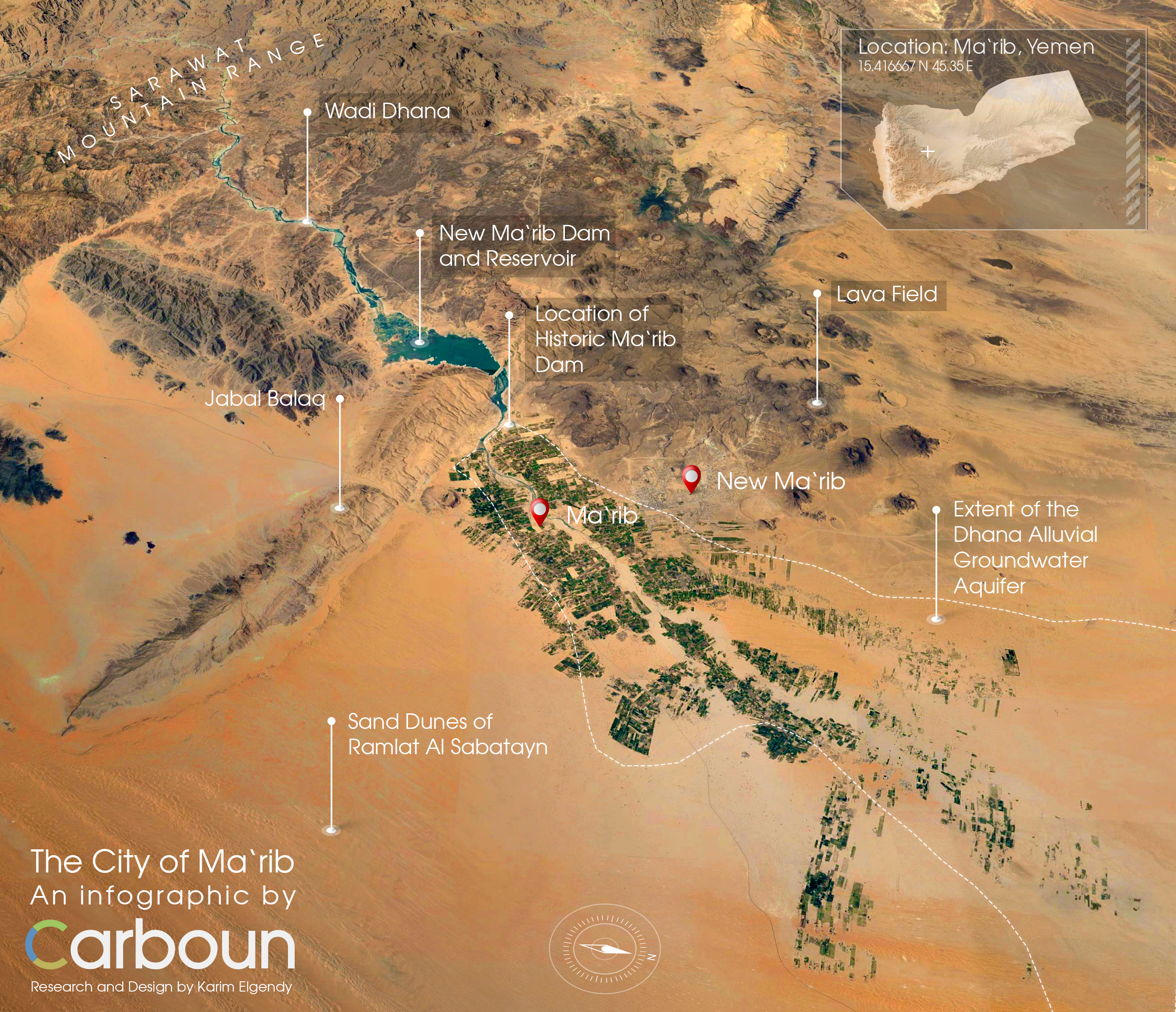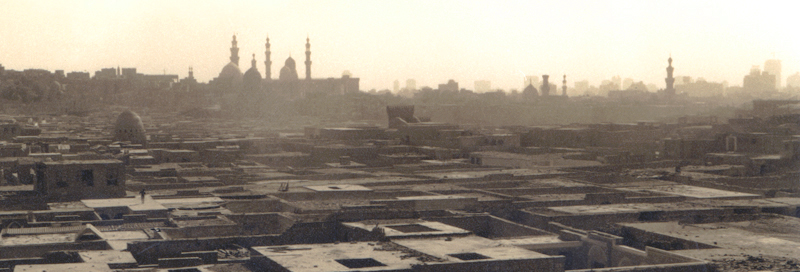|
|
Karim Elgendy
Human settlements have traditionally needed an environmental rationale to exist where they do. They needed access to freshwater and to ecosystems that have enough biocapacity to produce biological materials to sustain their residents. Settlements also required a climate that was moderate enough – or can be economically moderated – to support human habitation.
But for these settlements to become thriving cities, the prerequisites above were not enough. Successful cities depended to a large extent on their integration into an efficient trade network.
One historic regional example of this is the rise and fall of the city of Ma’rib, which is today a settlement of less than 20,000 people just 75 miles east of the Yemeni capital Sana’a, but for almost a millennium, was one of the region’s greatest cities.

Continue reading Cities, Biocapacity, and Trade: The Case of Ma’rib

Karim Elgendy
Most cities have a good reason for being located where they are. The major Palestinian cities of the WestBank are excellent regional examples of rational city location. The old cities of Jerusalem, Hebron, Bethlehem, Ramallah, Jenin, and Nablus are all located on the flat ridges of the West Bank mountain range, benefiting from mild climate and significant rainfall – unlike locations only 15 miles to the east such as the oasis city of Jericho.
Continue reading Cities of the West Bank

Karim Elgendy and Joumana al Jabri
An infographic comparing the two extreme urbanisms of Dubai and the Gaza Strip. While the two urban regions demonstrate surprising similarities when their geographic and demographic data are compared, their political and socio-economic conditions have produced urbanisms that are radically different and equally unsustainable.
A version of this infographic was first published by Portal 9 Magazine under “Reading Gaza Through Dubai”. Copyrights for the infographic are reserved for the Authors above. No reproduction or republishing of theinfographic or any part thereof is permitted without prior written consent from the authors. To discuss this infographic, please join Carboun’s discussion group on Linkedin. For news and updates on sustainability in cities around the region, join Carboun’s Facebook page or follow its Twitter feed. Continue reading Two Unsustainable Urbanisms: Dubai and Gaza

Karim Elgendy
In celebrating this year’s World Green Building Week, Carboun has released a visual guide to energy use in buildings with the goal of explaining the overall state of energy use in the region and the significance of buildings as a major sector in energy consumption. It also aims to comparatively explain the nuances of the major trends of energy use in buildings as a baseline analysis for further research. The visual guide, which was researched and designed by Karim Elgendy with additional contributions from a small research team, was based on raw data obtained from the International Energy Agency and the World Bank. Copyrights for all infographics are reserved for Carboun. No reproduction or republishing of any infographic or part thereof is permitted without prior written consent from the author.
Continue reading A Visual Guide to Energy Use in Buildings in the Middle East

Karim Elgendy and Wissam Yassine
Developing transportation networks and facilitating access and mobility are major constituents of the economic development of any country or region. Yet transportation also poses great economic and environmental challenges as a major energy consumer and a major contributor to global greenhouse gas emissions.
In the Middle East, the transportation sector is challenged on both fronts. On one hand, its underdeveloped and inefficient networks continue to hinder economic development. In addition, the transportation sector represents a major consumer of energy in the region and a primary contributor to carbon emissions. In 2008, the transportation sector was estimated to be responsible for 31% of the region’s total energy use – a relatively high proportion compared to the global average of 27% – while the road sub-sector alone was responsible for 18% of energy use – compared to 14% globally.
Continue reading Sustainable Transportation in the Middle East
Karim Elgendy
Two weeks ago, The English version of a leading Egyptian daily published an opinion piece on entitled “Our local ‘green’ agenda.” In his article, the author made a number of intriguing arguments that suggest that Egypt has a unique environmental agenda and a set of sustainability priorities that are different from the predominant global ones. He also suggests that imported ‘green’ concepts fail to take into consideration ingrained conservationist behaviors that already exist in Egypt.
While I agree that each country must develop a local approach to sustainability which responds to its specific socio-economic and environmental needs, I found many of the author’s arguments to lack sufficient context, and was therefore concerned that the article could potentially result in an inaccurate representation of the state of sustainability in Egypt.
 Cairo's Old City. Copyrights: Karim Elgendy Continue reading The State of Egypt’s Sustainability Agenda
|
|






